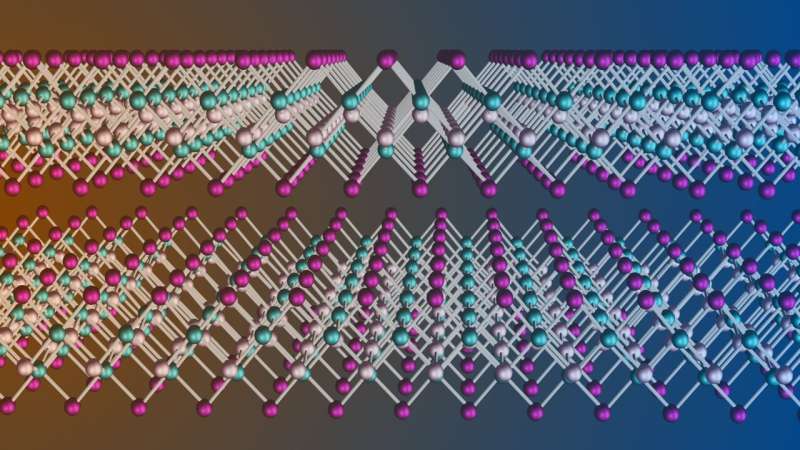
A temperature gradient is applied to a CrSBr thin film to measure its thermoelectric response. Credit: Alessandra Canetta
Thermoelectric systems are a green and sustainable way to harvest energy from any form of heat that would otherwise be wasted. At the core of this energy conversion process is the so-called Seebeck effect, which describes the accumulated stress in a material exposed to a temperature difference.
However, despite more than 100 years of intensive research, thermoelectric efficiencies are still lower than conventional heat engines, making thermoelectrics suitable only for niche applications.
That is why one of the main efforts of scientists today is to find new strategies to improve this efficiency. Our latest paper “Impact of spin-entropy on the thermoelectric properties of a 2D magnet”, published in Nano lettersshows that a solution could be in circuits based on two-dimensional (2D) magnetic layers.
Entropy adjustment in magnets
Thermoelectric properties are significantly influenced by entropy, which quantifies disorder in a system. Therefore, all mechanisms that increase these parameters can improve the conversion efficiency of the energy harvesting device.
In 2D magnetic materials, two additional factors can alter the entropy: the magnetic order, which gives rise to a “spin entropy” contribution, and the number of layers a charge carrier can access in a 2D layered material , which produces an “extra layer entropy”. “
In our paper, we measure the electrical and thermoelectric transport properties of the 2D CrSBr antiferromagnet, while changing the magnetic order of the material by varying the sample temperature or applying an external magnetic field. The study reports that the thermoelectric response increases with temperature as electrons and spins mobilize, reaching a local maximum around the Néel magnetic phase transition temperature.
Furthermore, it has been shown that a magnetic field can improve the thermoelectric power factor by up to 600% at low temperatures. These phenomena are explained by the interaction of the different entropy contributions in the material and highlight the strong impact that magnetic order has on the thermoelectric response of 2D magnets.
Towards innovative energy harvesters
The results we report demonstrate how the use of magnets could overcome the limits of conventional energy harvesting devices, as their thermoelectric properties can be optimized by altering the magnetic phase and thereby tuning the impact of the spin entropy
Furthermore, the use of 2D materials unlocks additional degrees of freedom, such as the ability to tune the transition temperature via multiple factors—i.e., film thickness, composition, electrostatic gating—that could allow to maximize its thermoelectric performance at room temperature. All these findings represent the first building blocks of a new way to design more efficient energy harvesters.
This story is part of Science X Dialog, where researchers can report the findings of their published research papers. Visit this page for information on Science X Dialog and how to participate.
More information:
Alessandra Canetta et al, Impact of spin-entropy on the thermoelectric properties of a 2D magnet, Nano letters (2024). DOI: 10.1021/acs.nanolett.4c00809
Alessandra Canetta is a third-year PhD student at UCLouvain (Belgium), under the supervision of Prof. Pascal Gehring. Canetta’s PhD project focuses on investigating the thermal and thermoelectric properties of 2D materials, in particular 2D magnets.
Subpoena: Exploiting disorder to colliding heat energy: the potentialities of 2D magnets for thermoelectrical applications (2024, April 30) retrieved May 1, 2024 from https://phys.org/news/2024-04-exploiting-disorder -harvest-energy-potentialities .html
This document is subject to copyright. Other than any fair dealing for the purposes of private study or research, no part may be reproduced without written permission. Content is provided for informational purposes only.
#Exploiting #disorder #harvest #thermal #energy #potential #magnets #thermoelectric #applications
Image Source : phys.org